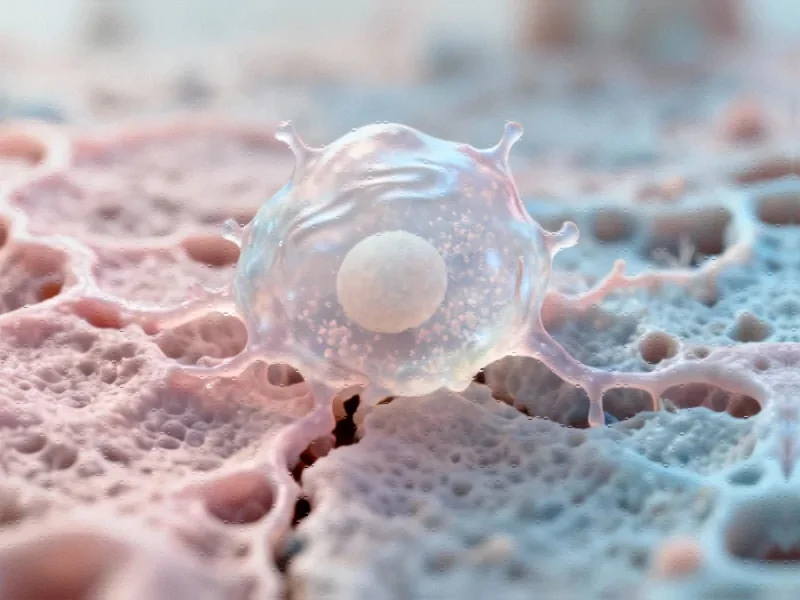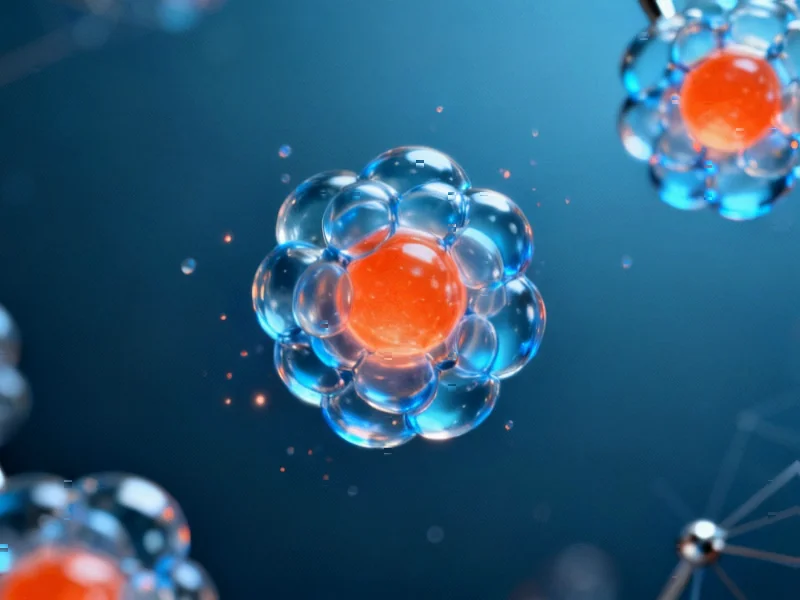Breaking Through AML’s Defenses
Acute myeloid leukemia (AML), one of the most aggressive forms of blood cancer, has long frustrated researchers with its ability to resist proteasome inhibitors—drugs that have shown remarkable success in treating multiple myeloma. New research from University of California San Diego reveals why these treatments fail against AML and demonstrates how a strategic combination approach can overcome this resistance.
The study, published recently, shows that AML cells activate backup stress-response systems when confronted with proteasome inhibitors. Unlike multiple myeloma cells that succumb to these drugs, AML cells cleverly rewire their survival pathways to maintain health and resist treatment.
The Cellular Detour System
Senior author Robert Signer, PhD, associate professor in the Division of Regenerative Medicine at UC San Diego School of Medicine, offers a compelling analogy: “Imagine you’re driving down the highway and you hit construction—you simply take an alternate route. When AML cells encounter the ‘construction’ of proteasome inhibitors, they do the same thing by rewiring their network to take an off-ramp and continue their journey.”
This cellular detour system involves two primary backup pathways: one regulated by the HSF1 gene and another through autophagy—the cell’s internal recycling mechanism. These emergency systems prevent protein “rubbish” from accumulating even when proteasomes are disabled, allowing cancer cells to survive treatment that would normally eliminate them.
Combination Therapy Breakthrough
The research team discovered that by combining proteasome inhibitors with Lys05—a drug that impairs autophagy—they could effectively shut down AML’s escape routes. In preclinical models, this dual approach killed AML cells more effectively, reduced disease burden, and extended survival.
First author Kentson Lam, MD, PhD, assistant clinical professor of medicine at UC San Diego School of Medicine, emphasized the significance of this mutation-agnostic approach: “Because AML involves so many potential gene mutations, developing targeted therapies has been challenging. When therapies targeting specific gene mutations are successful, they only benefit the small subset of patients whose cancer carries those specific mutations. We tested this approach across various AML cell lines and patient samples, and it worked across nearly all of them, regardless of their mutations.”
Broader Implications for Cancer Treatment
The researchers leveraged their expertise in stem cell biology—since AML cells originate from stem cells, unlike multiple myeloma cells—to develop this innovative treatment strategy. Their work represents a significant shift in how we approach cancer treatment resistance and opens new possibilities for combination therapies.
This research aligns with other related innovations in personalized medicine that are transforming cancer care. The approach of targeting protein pathways represents a novel direction in oncology that could benefit patients beyond just AML.
Future Directions and Clinical Applications
The UC San Diego team is now working to identify additional drugs that could disable AML’s backup survival strategies, with the goal of advancing combination therapies into clinical trials. As recent technology continues to evolve, researchers are optimistic about developing more effective treatment regimens.
These developments in cancer research are part of broader industry developments in medical science and artificial intelligence that are accelerating drug discovery. Similarly, advances in monitoring technology, as seen in recent technology sectors, are providing researchers with better tools for understanding disease mechanisms.
The Human Element in Medical Advancement
As Signer concluded: “Targeting these protein pathways is a new approach to cancer treatment. Our hope is that this new research will improve treatment options for a wide range of AML patients. As scientists, that is our ultimate goal: to find new ways to treat disease to improve lives.”
This focus on patient-centered outcomes reflects the growing emphasis on the human touch in healthcare innovation. Just as environmental scientists track market trends in climate change, medical researchers are monitoring the evolving landscape of cancer treatment to develop more effective strategies.
The study represents hope for the approximately 70% of AML patients who currently die within five years of diagnosis. With current therapies being either broadly toxic like chemotherapy or narrowly focused on rare genetic mutations, this combination approach offers a promising middle ground that could significantly expand treatment options for this devastating disease.
This article aggregates information from publicly available sources. All trademarks and copyrights belong to their respective owners.
Note: Featured image is for illustrative purposes only and does not represent any specific product, service, or entity mentioned in this article.



